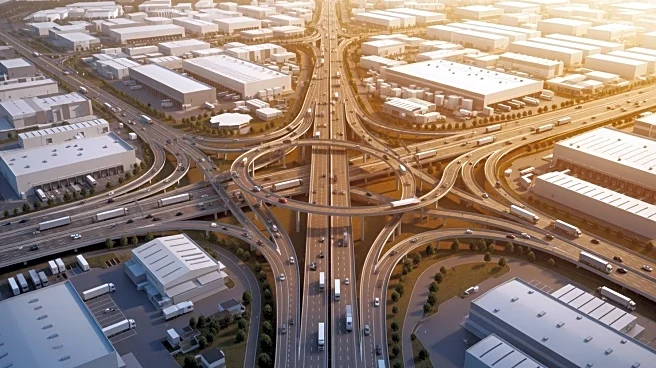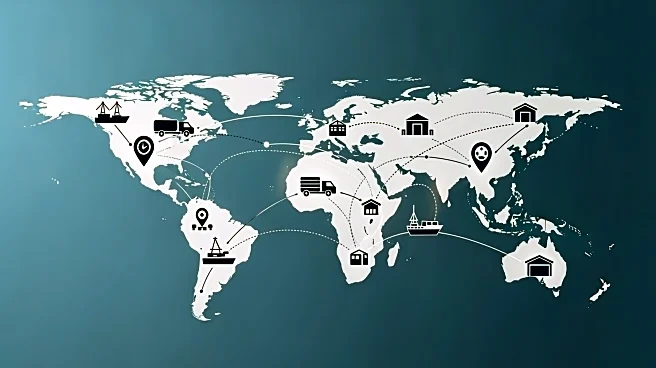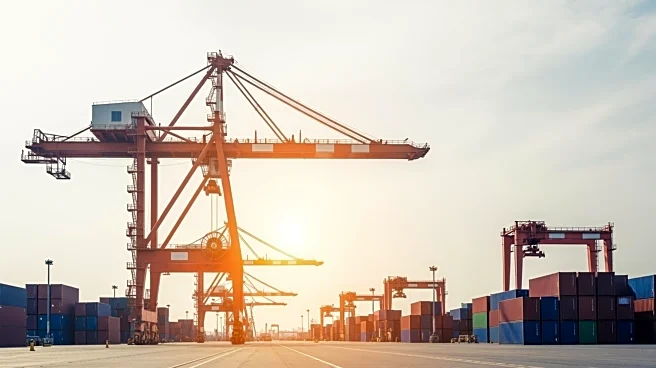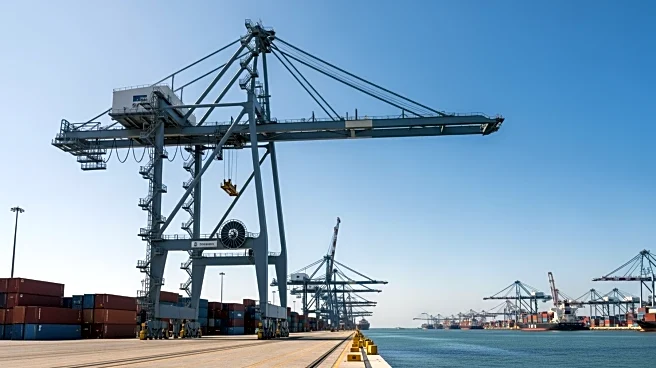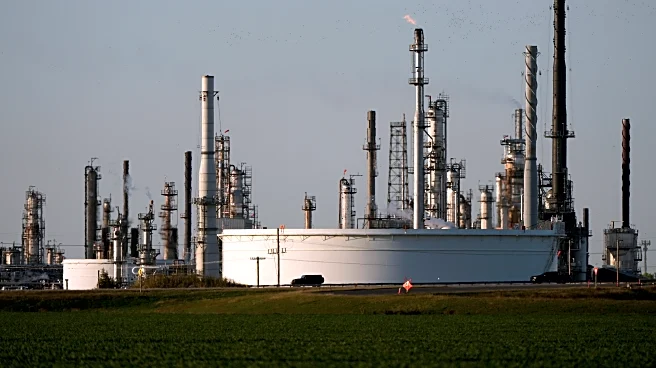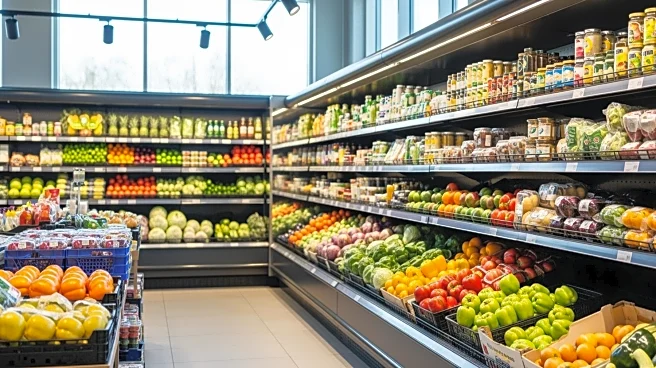What's Happening?
Regions across the United States are increasingly focusing on enhancing their logistics profiles to attract site-selection decision makers. This involves leveraging geographical advantages and investing
in infrastructure to become logistics hot spots. Key factors include proximity to dense population centers, access to multimodal transportation nodes, and a favorable regulatory environment. Experts like Nada Sanders from Northeastern University emphasize the importance of strategic location, physical suitability, and multimodal access in creating logistics-friendly regions. Port Tampa Bay serves as a prime example, with its strategic investments in terminal expansion and infrastructure modernization, positioning it as a leading logistics hub in Florida.
Why It's Important?
The development of logistics-friendly regions is crucial for supporting efficient supply chains, which are vital to the U.S. economy. By enhancing logistics capabilities, regions can reduce costs, improve resilience, and attract businesses that rely on efficient transportation networks. This can lead to economic growth, job creation, and increased competitiveness on a global scale. Regions that successfully integrate strategic location with advanced logistics infrastructure can offer significant advantages to businesses, including reduced last-mile costs and improved access to key markets. As supply chains become more complex, the ability to adapt and invest in logistics infrastructure will be a key differentiator for regions seeking to attract and retain businesses.
What's Next?
Regions aiming to enhance their logistics profiles will likely continue investing in infrastructure and developing partnerships with educational institutions to ensure a skilled workforce. This includes expanding port facilities, improving rail and highway connections, and fostering innovation in logistics technology. As regions compete to become logistics hubs, they may also focus on creating favorable business environments through streamlined regulations and efficient customs procedures. The ongoing evolution of global trade dynamics and technological advancements will require regions to remain adaptable and forward-thinking to maintain their competitive edge in the logistics sector.
Beyond the Headlines
The push to develop logistics-friendly regions also raises considerations around environmental impact and community engagement. As regions expand their logistics capabilities, they must balance growth with sustainability, ensuring that infrastructure development does not negatively impact local communities or ecosystems. Additionally, fostering strong relationships with local stakeholders, including residents and businesses, will be essential to gaining support for logistics initiatives. By prioritizing sustainable practices and community involvement, regions can create a logistics ecosystem that benefits both the economy and society.
